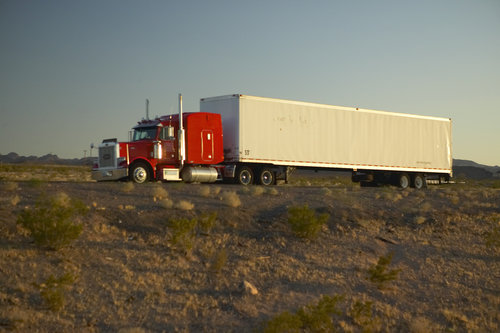Chris Henry, Program Manager, TCA Profitability Program

(PHOTO: SHUTTERSTOCK)
A weekly review of the Key Performance Indicators (KPIs) that all trucking companies should be tracking on a daily, weekly and monthly basis. These standardized KPIs are the foundation of the TCA Profitability Program’s inGauge Benchmarking Platform – the largest (and only) online benchmarking platform for the North American Truckload market.
“Which area of our business should we focus on to achieve the biggest impact to the bottom line?”
The above question (or something similar) is the most frequent question I get asked by trucking company owners and leaders. Outside of building up a strong customer service and fleet management team, with as many direct customer relationships as possible, your maintenance operation is without doubt the next one on the profitability checklist.
Here is a quick summary of the things you should be doing today, from a maintenance expense tracking point of view.
- Ideally, regardless of size, you need a maintenance software application. Although some of the big names in the maintenance software arena may be out of reach for some small operators, there are smaller, less-robust, cloud-based tools (including those offered for free by OEMs).The main function of these applications is the ability to track repairs and PMs by Repair/Work Order. This is the first step in becoming efficient AND proficient in maintenance. Ideally, these software applications will be linked directly to your accounting general ledger – however, it’s not necessary.
- You need to categorize your maintenance expenses appropriately. The first step in this regard is categorizing Outside (External Vendor) versus Internal repairs and maintenance. This one should be the easiest step for most companies (separating invoiced repairs from internal parts, labor and supplies). The next step is breaking the repair orders down by equipment type (e.g. Truck versus Trailer), Parts, Tires, Shop Supplies and Labor. The TPP team has reduced the confusion in this process, we’ve created a Standard Chart of Accounts for Trucking companies, based on seventeen years of iteration and improvement. You can download here for free.

3. Establishing an Internal Labor Rate – The top performing companies from a Maintenance perspective have all established an “Internal Labor Rate” The purpose of this rate is two-fold: 1) It provides a easy mechanism for establishing labor expense for each repair/work order, 2) It should capture the approximate/proportional amount of fixed overhead for your shop(s) (e.g. Heat, Light, Maintenance, Rent etc). The primary purpose of this exercise is not to establish your shop as a profit center, but to be able to accurately compare the true cost of repairs versus external vendors. For a rule of thumb (depending on your geography), an Internal Labor rate of 2.5 – 3 times the wage of your top technician should provide a close approximation of all direct and indirect expenses.
4. Keep Your Technicians Educated – Whether it’s via Dealer or OEM education, you want your team to be on top of the latest trends and innovations. Yes, they are problem-solvers by nature, but combining this inherent trait with timely knowledge/resources is a winning combo. I strongly recommend participating (at any level) in TMC, if you are not already involved.
Maintenance Expense per Mile – The Formula:

The above, is the simplest maintenance KPI among all our 114 maintenance Key Performance Indicators. However, if you want to improve your bottom line – you have to know where you stand on this measure, every month! Maintenance Expense includes ALL internal and external repair and PM work, including Parts, Labor, Tires, Shop Supplies, and consumables. Depending on the average age of your equipment, a good range for high performance should be between $0.16 and $0.225 per mile. Obviously, the older your tractors and trailers, the higher the maintenance expense. The general trend among high performing fleets is an average tractor age of less than 2.1 years.
How does your Maintenance Expense stack up against similar companies? Find out, by booking a demo here.









